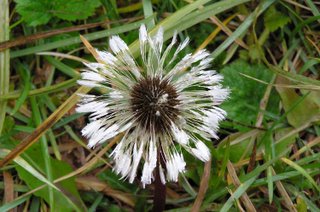Dianthus (Border Pink)
 |

This Flower looks like a skirt doesn't it? Someone says that it looks like a butterfly? What about you? Can anyone help to identify this flower? Thanks!
Added 13 December 2005
Thanks to Dee for Identification
The Dianthus we grow are also known as Border Pinks. These comprise a group of Dianthus larger than the diminutive alpine species and smaller than carnations. Some of these are old historic varieties such as Inchmery which originated in the eighteenth century. While others are more recent selections such as Mountain Mist. Many gardeners grow Dianthus for their fragrance. The spicy scent varies with each variety. In the plant descriptions we try to indicate the range of fragrance. Some such as Rose du Mai are highly scented, while Allspice and Brympton Red are not so overpowering with their scent. A number of the Dianthus we grow are known as Laced Pinks. These are typically double or semidouble flowers having each petal edged in shades of pink to burgundy. Examples of these are London Delight or Gran's Favourite. Since the Border Pinks have a relatively short blooming season (3 - 4 weeks in early summer), it is often important to select plants which look attractive in the garden when not in flower. Charles Musgrave, though highly scented, has little to offer with its sprawling habit, whereas Essex Witch or Waithman's Beauty make tidy mats of low dense foliage which are attractive throughout the year. Regardless of whether it's an historic Dianthus or a recent introduction, or scented or not, all the Dianthus are cheery in the garden and make wonderful cut flowers.
Info quoted from http://www.canyoncreeknursery.com/dianthus.html



